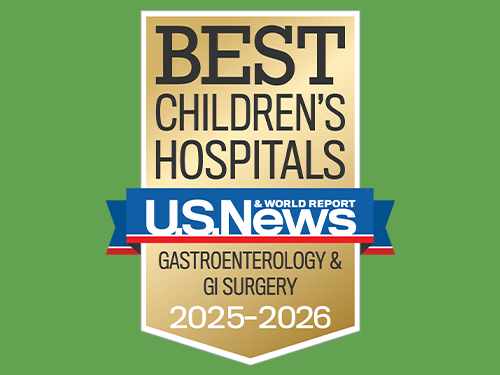What Is Hirschsprung Disease?
Hirschsprung disease is a condition you are born with that stops or slows down the movement of food and waste through the intestine. It is caused by a problem with the nerve cells, called ganglion cells, in the colon or rectum (the lower part of the intestine).
Normally, these nerves help the muscles in the wall of the bowel squeeze and relax, pushing food and waste along the way (motility). When these nerves are missing, the intestine cannot push the digested food through, and children cannot have normal bowel movements, or they have fewer bowel movements than normal. Hirschsprung disease is most often found in males and is commonly found in children with Down Syndrome. It can be life-threatening or a chronic disorder. The inadequate motility is a result of an aganglionic (without nerve tissue) section of the intestines, resulting in megacolon (dilated section of colon).
What Are the Symptoms of Hirschsprung Disease?
In a newborn, the chief signs and symptoms can include:
- Absence of stool in the first two days of life
- Reluctance to eat
- Constipation
- Diarrhea
- Vomiting (might be green or bile stained)
- A bloated or distended abdomen
In older children, symptoms become chronic and can include:
- Severe constipation
- Loss of appetite
- Delayed growth (failure to thrive)
- Diarrhea (enterocolitis)
- Severe illness (sepsis)
Explosive, watery diarrhea, fever and exhaustion are signs of enterocolitis (inflammation of the colon) and are considered serious and life-threatening. If these symptoms occur, notify your child's doctor immediately.
How Is Hirschsprung Disease Diagnosed?
The most certain way to diagnose Hirschsprung’s disease is to do a rectal biopsy, where the surgeon removes a small piece of tissue to examine under the microscope to look for nerve cells (ganglion cells). In babies, this test can be done at the bedside or in clinic without putting the baby to sleep under anesthesia. The test does not hurt.
Other diagnostic tests that might be used include:
- Contrast enema – an X-ray of the colon that uses special dye to help us see what part of the colon may be affected
- Anorectal manometry – a study done to test the how the anal sphincters are working. In Hirschsprung disease, the internal anal sphincters don’t relax (open up) well.
How Is Hirschsprung Disease Treated?
Once your child is diagnosed with Hirschsprung disease, treatment will start with rectal irrigations. This is when we put a soft, flexible catheter into the rectum to irrigate out the stool with saline solution. This helps to clear the stool from the rectum and colon.
Surgery is needed to remove the part of the colon that does not have ganglion cells. The healthy intestine is then reconnected to the anus so that your child can pass stool normally. This surgery can usually be done minimally invasively with small incisions, which may decrease pain and healing time after surgery.
Often, the removal of the colon without ganglion cells and the reconnection of healthy intestine to the anus can be completed in a single operation. In some cases, a temporary colostomy or ileostomy, an opening from the colon or small intestine to the skin to allow passage of stool into a bag, is created This may be done if your child is sick with enterocolitis, or if rectal irrigations have not been effective in removing stool from the colon. This colostomy or ileostomy allows the bowel some rest in order to return to its normal function. It also allows the child time for weight gain before the more complicated repair takes place in the next surgery. In the final correction, the pediatric surgery team pulls the working part of the colon down and attaches it to a point near the anus. The colostomy or ileostomy may be closed at this time.
What does recovery look like after surgery?
After surgery, most children stay in the hospital for approximately one week. During this time, while we are waiting for the intestines to recover from surgery and for your child to begin eating again, your child will be given fluid, and sometimes nutrition, through an IV.
Before you leave the hospital, we will make sure you know how to care for your child’s surgery incisions. It is common for children to stool frequently after surgery, and we will also make sure you know how to protect the skin around your child’s anus to prevent a severe diaper rash.
Long-Term Treatment
Even after surgery, children with Hirschsprung disease need specialized care. Some patients may develop Hirschsprung Associated Enterocolitis (HAEC), with is an infection of the intestines that can cause severe diarrhea and sometimes vomiting and fever. If your child has Hirschsprung disease and develops these symptoms, please call your doctor’s office immediately.
Patients with Hirschsprung disease can also develop problems with constipation or sometimes leakage of stool. This often can be managed with medicines and laxatives. We have a specialized Bowel Management program that is designed to follow children with Hirschsprung disease after surgery and help make sure they are stooling regularly.
Contact Us
If you have any questions, use the online tool below to help us connect with you. To refer a patient or schedule an appointment, please contact our clinic using the information below.
- UT Physicians Pediatric Specialists
Texas Medical Center
6410 Fannin St., Suite 500
Houston, Texas 77030
Phone: (832) 325-6516 - UT Physicians Pediatric Surgery
Texas Medical Center
6410 Fannin St., Suite 950
Houston, Texas 77030
Phone: (832) 325-7234
To contact Children's Memorial Hermann Hospital, please fill out the form below.
If you are experiencing a medical emergency, call 911 or go to the nearest emergency room.
If you or someone you know needs support from the Suicide and Crisis Lifeline, call or text 988.
